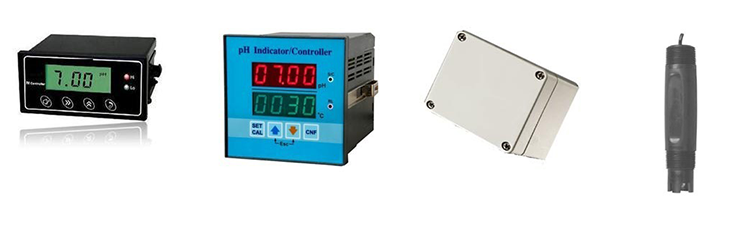pH Transmitter Suppliers in Laxmi Nagar

Smis Instrumentation: We are pH Transmitter Suppliers in Laxmi Nagar.
pH transmitters, commonly called analyzers, provide electrical outputs that are proportional to potential of hydrogen (pH) inputs. The pH scale is used to express the acidity or alkalinity of a solution by measuring the concentration of hydrogen ions in the solution. pH transmitters are part of a larger system which monitors and analyzes the pH of a solution. The transmitters function under the principle that an acidic solution has a higher concentration of hydrogen ions than an alkaline solution. The device includes a pH sensor, which uses electrodes or wires to test the solution's pH, and a controller which processes the raw signal from the pH sensor and delivers it to the transmitter. In this way, a pH transmitter is able to convert the pH of a solution into an electrical signal. A pH transmitter differs from a pH meter because it has a communication interface which can transmit data to a control system or computer.
The device employs a stabilization feature which prevents the transmitter from accepting a buffer pH reading that has not reached a prescribed level of stabilization, in terms of pH change per time. This feature helps eliminate the common problem of not allowing enough time for the pH to approach the buffer value that leads to a lower observed slope and higher than necessary slope correction during calibration. pH transmitters have to be regularly "buffered" with solutions of known pH to establish the calibration. They are usually made of glass electrodes and are very delicate.
Types
There are several basic types of pH transmitters. These include,
Loop pH powered transmitter: A two-wire device typically powered by a 24 VDC powered transmitter or a 120/240 VAC powered analyzer. These pH transmitters often include a built-in preamplifier which conditions the signal coming from the pH sensor and provides a 4-20 mA output signal to the transmitter.
Ion sensitive field effect transistor (ISFET): A type of transistor that responds to changes in the hydrogen ion concentration in a solution. When the hydrogen ion concentration or pH changes, less electrical current flows through the transistor. Consequently, ISFETs are well suited for use in pH sensors and pH transmitters. ISFET silicon chips are more durable and reliable than glass pH electrodes, which may break in harsh environments. ISFET-based pH electrodes also offer more stable pH measurement, with a response rate typically ten times faster than glass electrodes. ISFET-based pH transmitters are popular in pharmaceutical applications and the food processing industry. Their durability allows them to be easily sterilized without the risk of breaking during handling.
Product Selection
In addition to type, industrial buyers should consider operating requirements, performance specifications and key features when selecting a pH transmitter
Operating Requirements
Power requirements vary depending on the type and model of the transmitter. Many devices are stationary, but battery operated portable devices are available.
Enclosure of the transmitter is important to consider. The application of the device will determine the size, mount options, weatherproof and resistance to corrosion needed to ensure proper function in the field.
Input/Output options can include single or dual sensor versions. Dual sensors can be programmed to account for several parameters including pH, dissolved oxygen, and temperature measurements.
Compatibility of the device with multiple systems and in multiple industries is important to consider when selecting a pH transmitter. Most systems come with computer software for easy use and customization to user needs.
Display type is generally a high-contrast digital LCD screen and can come with options including plain language prompts and help screens.
Analog systems are traditional one-directional communication protocols. They transmit one variable per loop and the device must be calibrated on the device itself. The current is proportional and scalable to the sensor signal.
Digital communication protocols allow for simultaneous transmission of additional measurements. The signals are bi-directional allowing for remote monitoring and off-site configuration to troubleshoot and reduce false alarms.
Security of the device and system should be considered. Many devices offer various levels of password protection and alarming systems.
Applications
Neutralization systems
Heavy metals recovery
Plating control
Scrubber control
Pool and spa control
Environmental study
Water treatment
Water quality monitoring
Waste treatment
Disinfection


 072 59 817300 / 072 59 817301
072 59 817300 / 072 59 817301
 http://www.smisinstrumentation.com
http://www.smisinstrumentation.com




